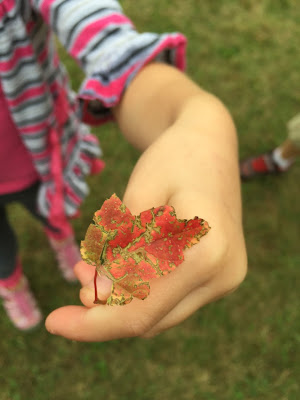It's so easy for me to get caught up in the back-to-school to do list of room set up and name tags that I sometimes lose sight of the most important goal for September - getting to know the children. In the first month, I don't have to teach them all how to read, use number bonds, or stretch words, but I do need to explore where they come from, what their interests and abilities are, and what their hopes and dreams are for kindergarten. They also need to get to know me and the rest will come a lot easier if we take this time.
Here are some of the first experiences we had last year during those “Get to Know You Weeks.”
We drew birthday cakes and shared how old we were (well maybe not me!) and found out which of us have birthdays in the same month. The cakes were a nice first sample of their drawing and coloring.
We read stories and sang songs of characters with unusual names such as Tikki Tikki Tembo, Chrysanthemum, Bingo and Catalina Magdalena. Then we looked closely at our own names, counted the number of letters and made name cards. We did this in small groups which gave me the opportunity to see if the children could identify and sequence the letters independently or if they needed support.
We looked closely at our faces in mirrors and explored the ways we were the same and different. We created faces with loose parts and drew self-portraits as inspired by the books Let's Make Faces and Faces. The self-portraits were repeated at the end of the year to show our growth over time.
We shared our writing folders, which were decorated with pictures to tell about ourselves, and would later be used as a source for writing ideas. We learned about each other's likes/dislikes and I was able to observe their listening and speaking.
We explored our school's motto (Treat others the way you want to be treated) and talked about what that meant to each of us. We made a concrete representation of it in the form of a golden circle.
We took a fall walk and wondered about the things we saw and touched. We created a chart of our observations and began to ask questions about the season. I noticed that some children were able to offer a question while others struggled to do this.
We explored the centers and materials in our room. Some children played alone while others worked together. Some were able to sustain play while others flitted from one choice to the next. I watched to see which centers they were most interested in and which they visited the least.
We sang lots of songs and paired them with movements. Most children enjoyed participating but a few were more self-conscious. Some children had good body control while others needed a little support.
We sang lots of songs and paired them with movements. Most children enjoyed participating but a few were more self-conscious. Some children had good body control while others needed a little support.
We read, talked, and responded to many books, including The Invisible Boy, and the children were invited to make connections between themselves and the characters and/or stories. Their connections told me about their experiences and gave me insight into their language use.
This year I'll be offering some of these same experiences, while adding a few new ones. Most are included in the last deck in the Kindergarten Kick Off series, Getting to Know You. You can find it here:
Thanks for stopping by!
This year I'll be offering some of these same experiences, while adding a few new ones. Most are included in the last deck in the Kindergarten Kick Off series, Getting to Know You. You can find it here:
Thanks for stopping by!
Jackie
We are a participant in the Amazon Services LLC Associates Program, an affiliate advertising program designed to provide a means for us to earn fees by linking to Amazon.com and affiliated sites.














































